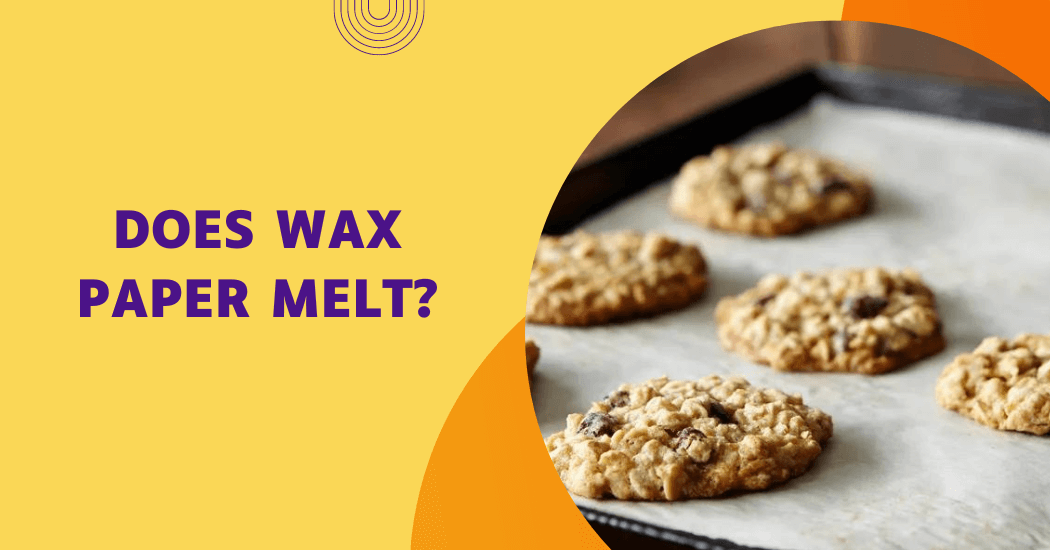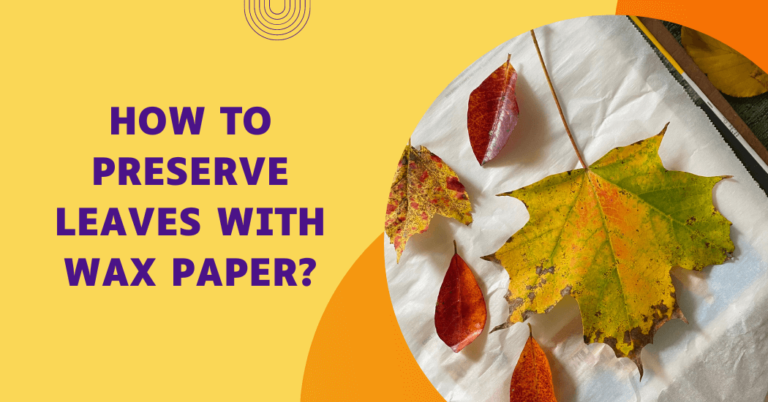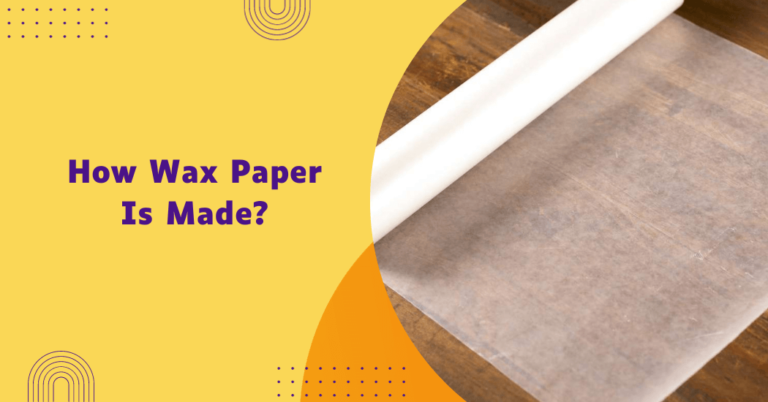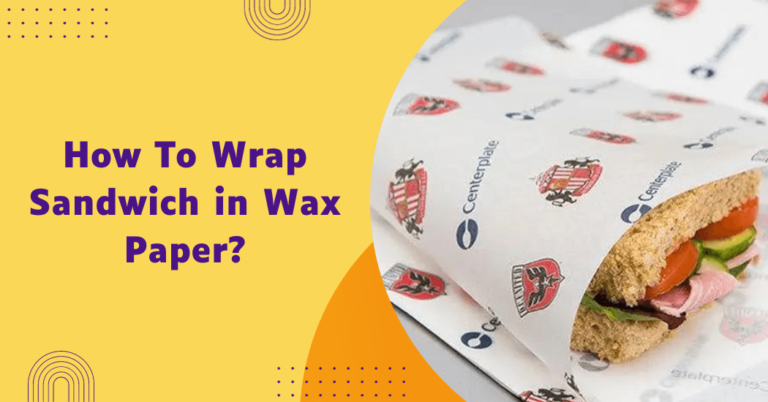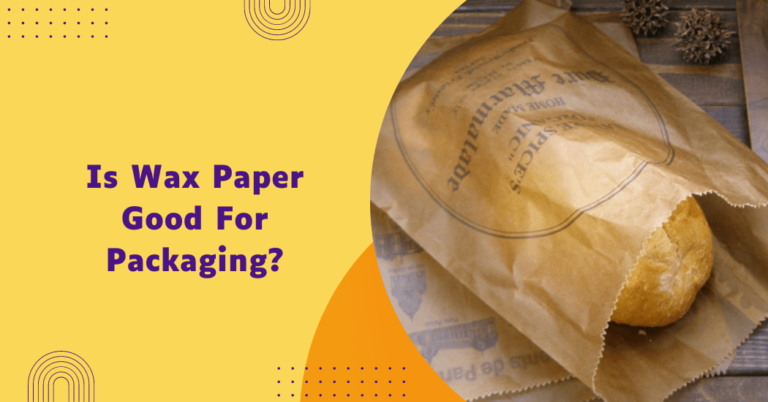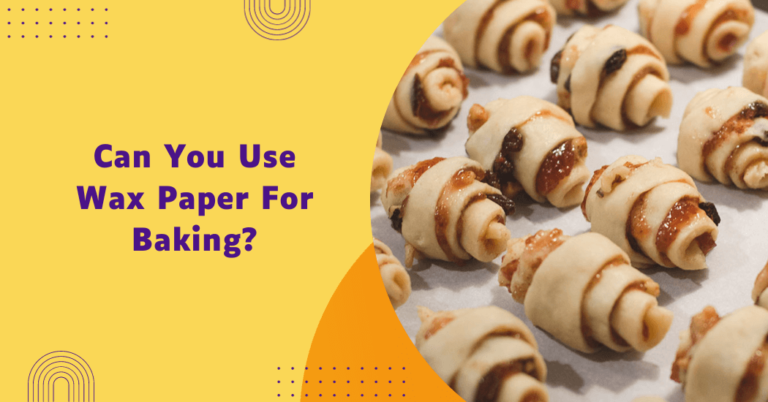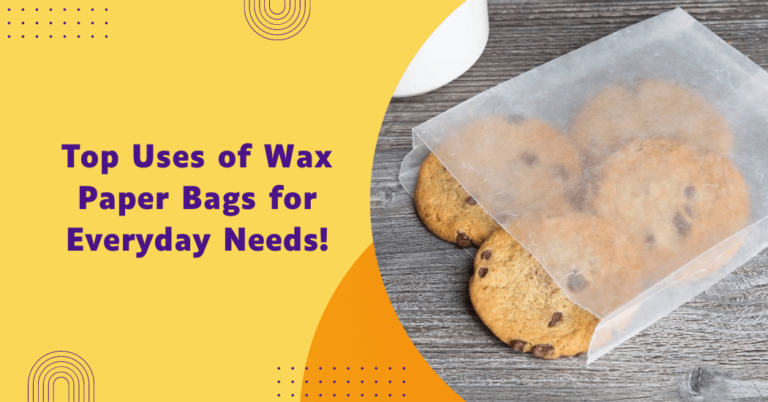Does Wax Paper Melt? Expert Opinion
Have you ever used wax paper in the kitchen and wondered, “Does wax paper melt?” It’s a valid question, especially when thinking about its application in baking or cooking.
While a common household item, Wax paper is a bit of a mystery to many. Understanding its properties including whether it melts under heat, is essential for safe and effective use.
In this blog post, we will delve into the properties of wax paper, its melting point and its safe applications in the kitchen. We will also discuss the correct and safe ways to use wax paper in the kitchen.
By the time you finish reading, you’ll have an in-depth understanding of when to utilize wax paper and when it’s best to keep it in the drawer.
Ultimately, our goal is to ensure that your cooking experiences remain enjoyable and hassle-free and this post will equip you with the knowledge to do just that. So read on.
Does wax paper melt?
The short answer is yes, the wax paper does melt. Wax paper is coated with a thin layer of wax on either side; this creates an airtight seal, which helps to keep moisture and oils in or out of whatever the paper comes into contact with.
Unfortunately, wax has a relatively low melting point (around 144°F/62°C) so it can melt, especially in direct contact with high heat.
While wax paper can melt, that doesn’t mean you shouldn’t use it. If used correctly, wax paper can be a very useful tool in the kitchen. Using it to line baking sheets or parchment pans helps ensure that cakes and brownies slip off without sticking.
Wax paper is also terrific for wrapping sandwiches and rolls as it will keep them fresh longer than plastic wrap.
Factors influencing the melting point of wax paper
When it comes to wax paper melting, there are a few factors that will influence the melting point.
- Wax Composition: Type of wax used to coat the paper significantly affects its melting point. Waxes are composed of various hydrocarbons and the length and structure of these hydrocarbon chains can influence the melting point. For example, paraffin wax, which is commonly used for wax paper, has a relatively low melting point compared to other waxes.
- Wax Thickness: Thickness of the wax coating on the paper will impact the melting point. A thicker wax coating will generally require more heat to melt compared to a thinner layer.
- Paper Thickness and Composition: Type of paper used and its thickness can also influence the overall melting point of wax paper. Thicker papers with higher heat resistance will be less likely to melt than thinner, more delicate papers.
- Environmental Temperature: The ambient temperature can affect the melting point of wax paper. In warmer environments, the wax may soften or partially melt, while in colder environments, it may become more brittle.
- Heat Source and Intensity: Heat source and its intensity play a crucial role in melting wax paper. If exposed to a direct heat source, such as an open flame or a very hot surface, the wax may melt rapidly. However, in indirect heat or lower heat conditions, the melting process will be slower.
- Moisture Content: Moisture can influence the melting point of wax paper, as it can affect the wax’s integrity and behavior when exposed to heat.
- Chemical Contaminants: Chemical substances, such as certain types of oils or solvents, can interact with the wax coating and potentially lower the melting point of the wax paper.
- Pressure and Compression: In some situations, pressure and compression can affect the melting behavior of wax paper. Applying pressure might cause the wax to melt at lower temperatures.
Heat resistance of wax paper
The recommended temperature limit for wax paper is typically below its melting point, which is around 144°F/62°C. This is because wax begins to soften and possibly melt when it comes in contact with heat sources above this temperature.
Therefore, it’s best to use wax paper in cooking scenarios that require lower temperatures, such as wrapping sandwiches or lining a pan for a cold dessert. Wax paper is perfect for non-cooking-related kitchen tasks, such as rolling out dough, catching chocolate or icing drips and wrapping food for cold storage.
Comparing wax paper to other food grade materials in terms of heat resistance
| Material | Heat Resistance | Notes |
|---|---|---|
| Wax Paper | Up to 144°F/62°C | Not suitable for use in ovens or on direct heat sources due to low heat resistance. |
| Parchment Paper | Up to 425°F/220°C | A great alternative to wax paper for baking and cooking due to its higher heat resistance. |
| Aluminum Foil | Up to 1220°F/660°C | Has a high heat resistance and can be used in ovens or on direct heat sources. |
| Plastic Wrap | Up to 250°F/121°C | Suitable for use in microwaves and for cold storage but not in ovens or on direct heat sources. |
| Butcher Paper | Up to 420°F/216°C | Ideal for smoking meats due to its high heat resistance. Not coated and can with stand higher temperatures than wax paper. |
Potential hazards of melting wax paper
- Fire Risk: Wax paper can ignite if it comes into direct contact with a heat source, such as a stovetop or an open flame. This makes it a potential fire hazard in the kitchen, especially when used improperly.
- Food Contamination: When wax paper melts, the wax can seep into the food it’s in contact with. While most food-grade waxes are non-toxic, they can alter the taste and texture of food.
- Smoke Production: Melting wax paper can produce smoke, which can be irritating to the eyes and respiratory system. This is particularly hazardous for those with asthma or other respiratory conditions.
- Oven Damage: Wax paper can melt and stick to the interior surfaces of an oven, creating a mess that’s difficult to clean. If not removed, the residual wax can continue to smoke and potentially ignite in subsequent uses of the oven.
- Risk of Burns: Handling melted or burning wax paper can lead to burns. The hot wax can stick to the skin, causing painful burns and possible skin damage. It is important to avoid touching melted wax paper and use thick oven mitts when handling hot wax paper.
From all of these considerations, it’s clear that wax paper should be used with care, as its melting point is relatively low compared to other food grade materials.
To ensure safe usage, always check the temperature of cooking methods before using wax paper.
Wrap Up
In conclusion, it is indeed possible for wax paper to melt under specific circumstances. The non-stick properties of wax paper derive from its thin wax coating, which unfortunately has a relatively low melting point.
Exposure to high-temperature environments, such as ovens or stovetops, can result in the wax melting and possibly causing unwanted results. To prevent this, it’s vital to adhere to the suggested temperature range for wax paper and avoid exposing it to open flames or heated surfaces directly.
While wax paper is undoubtedly a handy tool in the kitchen, recognizing its constraints is key to maintaining safe and efficient use.
